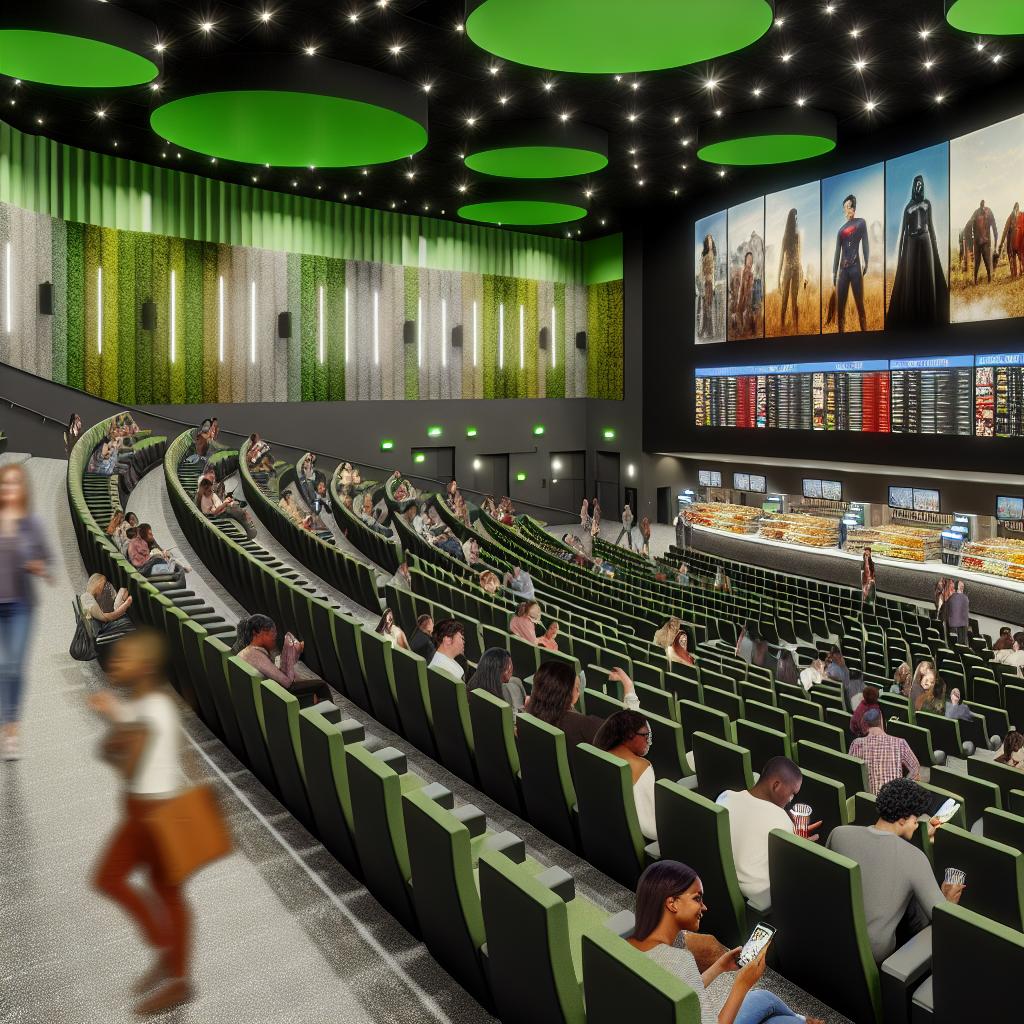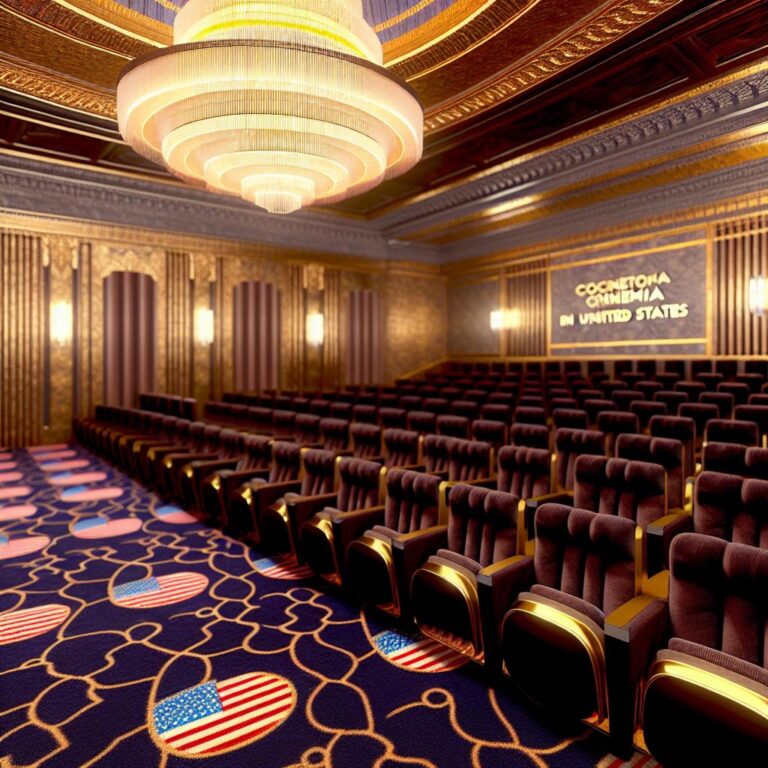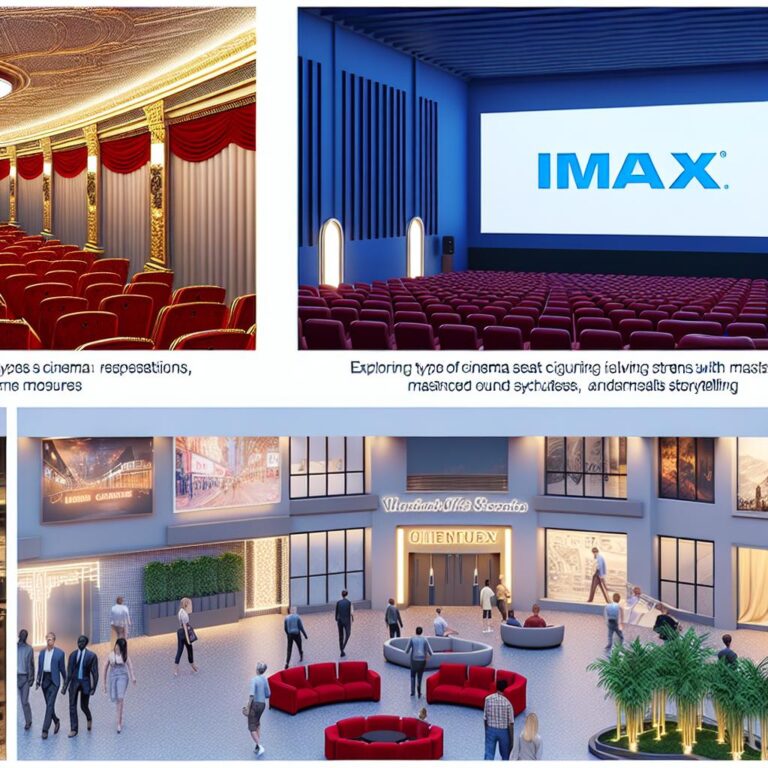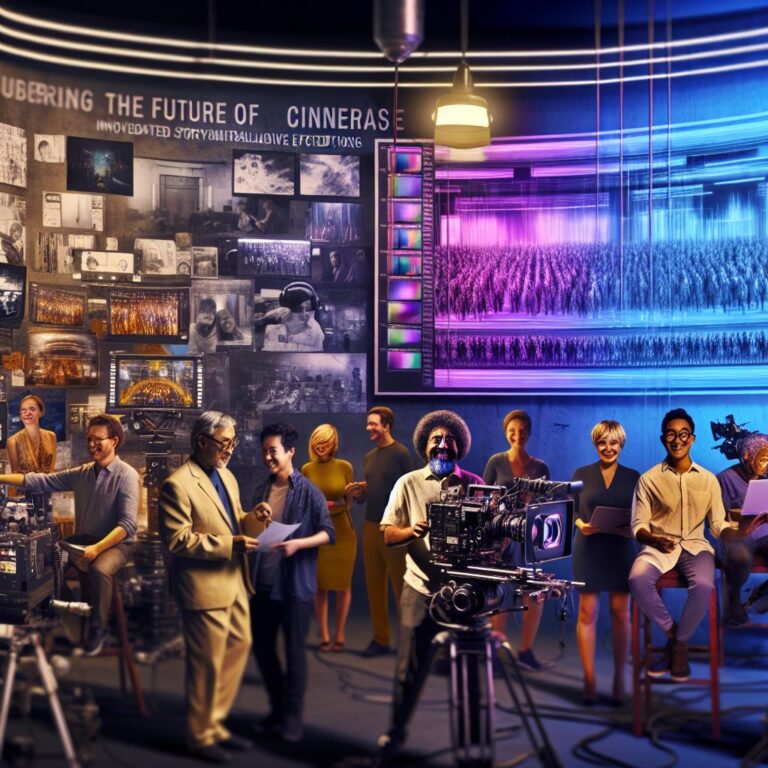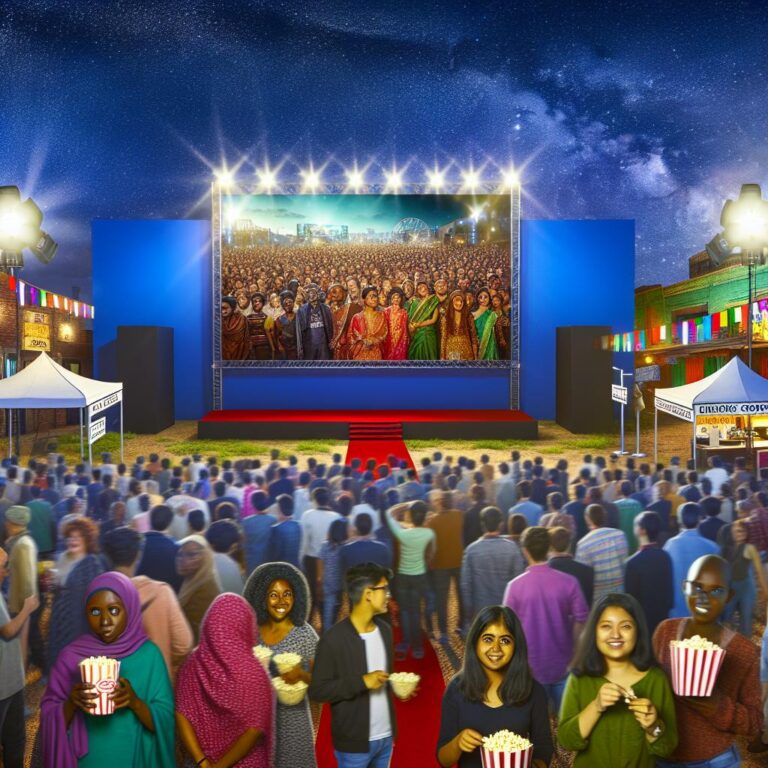Are global cinema chains adapting to new market trends?
- AMC Theatres is the largest cinema chain globally, with $3.91 billion in revenue and over 11,000 screens.
- Regal Cinemas, owned by Cineworld, is the second largest in the US with 7,200 screens and $3.2 billion in revenue.
- Cinepolis in Latin America has 5,251 screens and a revenue of $3.25 billion, catering to luxury markets.
- Wanda Cinemas leads in China with 1,657 screens and $2.71 billion earnings.
- Cinemark USA operates 5,957 screens, earning $2.45 billion, and is prominent in Brazil.
- Cineworld, with 9,500 screens across ten countries, earns $1.515 billion annually.
- Vue International operates 1,989 screens and earns $362.8 million.
- Chains adapt to streaming by enhancing unique theater experiences and diversifying their offerings.
- Growth after COVID-19 focuses on exclusive releases, safety measures, luxury services, and technological upgrades.
Ever wondered how global cinema chains keep up with market trends? I'm here to unravel that mystery. From major brands to local favorites, the cinema world is shifting fast, adapting to new technologies and audience demands. We'll dive into the major players, the challenges of streaming, and the innovations shaping your movie experience. So, let's explore if these giants really are moving with the times or getting left behind.
What are the largest global cinema chains and their market reach?

When exploring the vast world of cinema chains, size and reach quickly become significant facets of discussion. The largest theater chains worldwide are impressive both in terms of their extensive screens and financial successes. Understanding the market share of these cinema giants provides a fascinating glimpse into the industry dynamics.
Which cinema chains dominate the international market?
AMC Theatres holds the crown as the biggest global cinema chain. With an astounding revenue of $3.91 billion, it operates over 11,000 screens. AMC's multiplex concept revolutionized the movie-going experience, setting this cinema brand apart in innovation. Despite setbacks during the pandemic, AMC continues to remain a pivotal player.
Regal Cinemas, now an essential wing of Cineworld, stands as the second largest in the American context, with 7,200 screens. With annual earnings reaching $3.2 billion, Regal partners with PepsiCo for drink sales, a unique business angle. Regal's cinema chain market share emphasizes its stronghold in North America.
Over in Latin America, Cinepolis leads the cinematic charge with 5,251 screens. The company is celebrated for its “luxury cinemas” which cater to more exclusive experiences for VIPs. Its hefty $3.25 billion revenue showcases Cinepolis’s significant influence in and beyond its regional confines.
How is market share distributed among key cinema brands?
Wanda Cinemas commands a significant theater presence in China. Operating 1,657 screens, it amasses earnings of $2.71 billion. Owned by the Dalian Wanda Group, this chain is pivotal in China's fast-evolving cinema landscape.
Meanwhile, Cinemark USA boasts 5,957 screens and records $2.45 billion in revenue. Its wide reach extends to Brazil, where it has become the largest movie theater chain. Despite past controversies over executive donations, Cinemark stays resilient in its market.
Cineworld, with 9,500 screens stretched across ten countries, earns $1.515 billion annually. This British giant is in recovery mode from COVID impacts, working towards strengthening its market standing. Its diversification attempts are noteworthy, aiming to assimilate into evolving viewer trends.
Cineplex Entertainment contributes to the Canadian cultural scene, employing 13,000 individuals and pre-COVID earnings of approximately 1,655 million CAD. Dabbling into videos and arcade ventures, Cineplex displays adaptation prowess amid a static cinema landscape.
Finally, Vue International, with 1,989 screens, amasses $362.8 million. Known as the second-largest British chain, Vue operates in nine countries. Such expanse underlines its strategic market maneuvers despite facing stiff competition.
What are the historical growth trends of major theater chains?
Historically, the growth dynamics for these major cinema brands offer rich anecdotes of resilience and adaptation. AMC, since 1920, ushered in the multiplex era. This innovation catapulted it to the forefront of the cinema chain market share. Over time, AMC has introduced novelties like armrest cupholders, further enhancing viewer comfort.
Regal's early partnerships and branding efforts allowed it to entrench deeply within the American scene. Its evolution saw the incorporation of new revenue models, like partnering with significant suppliers for product sales, which other brands emulated. This trend underscores how strategic alliances have benefited cinema circuits.
Cinepolis’s focus on luxury experiences highlights the industry's shift towards diverse service models. It showcases how cinema chains enhance appeal by integrating luxury and exclusivity within their offerings. Wanda Cinemas’ growth marks a unique contrast, depicting the rise of Eastern markets on the global cinema stage.
Throughout history, cinema chains adjusted to changing economic climates. The early 2000s saw a diversification in service, moving beyond just film screenings. This decade pushed the concept of "cinema as a comprehensive experience," inspiring theaters worldwide. Robust expansion into niche markets and tech changes reflect responsive growth strategies.
Industry players face ongoing challenges. From the rise of streaming media to recent pandemic upheavals, adaptation remains crucial. Projections suggesting a global CAGR of 4.50% through 2028 present optimism. With resilience backing them, theaters could continue to witness fruitful growth.
Global cinema chains will always reflect a blend of history and modernity. Their evolution speaks volumes about market reactions and future capabilities. As movie screens shine across continents, these cinema brands hold many stories that entertain us beyond the films themselves.
How has the cinema industry evolved in different regions?

What are the prominent cinema chains in Africa?
Africa’s cinema scene is both exciting and diverse. Some key players include Nu Metro and Ster-Kinekor in South Africa. These chains show local and global films, providing a mix for audiences. Ster-Kinekor is known for its many screens, offering wide movie choices. Nu Metro was early to create multiplexes, adding value to moviegoing. Their venues also offer advanced equipment like 3D and IMAX. Elsewhere, Nigeria has Silverbird and Filmhouse cinemas. These chains play Nigerian and Western films. They support the growing Nollywood industry, a beloved part of local culture. African chains foster cinema love, despite facing piracy challenges. By investing in local films, they bolster industry growth.
How does the cinema landscape differ in Asia compared to the Americas?
In Asia, cinema is a vital cultural element. Chains like Wanda Cinemas in China and CGV in South Korea lead here. Wanda owns many screens across China, while CGV is admired for its multiplexes. Asian cinemas often highlight local films, making them popular. In contrast, the Americas have Cinepolis in Mexico and Regal in the U.S. Cinepolis is known for lavish cinemas, drawing many viewers. Regal is part of Cineworld, a significant name in North America. The Americas typically show big-budget films from Hollywood. The cinema culture contrasts with Asia’s, focusing on blockbuster experiences. In the Americas, audience draw fluctuates with movie releases. Asia consistently celebrates cinema through local productions, offering steady cinema attendance.
What are the unique cinema attributes in Europe and Oceania?
Europe and Oceania offer distinctive cinema experiences. In Europe, chains like Vue International and Cineworld are significant. They operate in several countries, showing both Hollywood and European films. Vue International is the second-biggest in Britain, with cinemas in multiple regions. European cinemas often emphasize classic films, with festivals being common, adding a vintage feel. In Oceania, Event Cinemas in Australia is notable. They show a variety of films in luxurious settings. New Zealand showcases both local films and international ones, promoting regional filmmakers. Europe tends to have rich cinematic traditions, evident during film fests. Oceania blends local cultures with mainstream cinema, offering unique viewing experiences.
In conclusion, the cinema industry’s regional attributes enrich global culture. Africa thrives with dynamic chains supporting Nollywood. Asia’s vibrant cinema scene promotes local films. The Americas bring Hollywood blockbusters to life. Europe celebrates cinema history through festivals. Oceania embraces cultures through a mix of films. The industry’s unique blends delight audiences worldwide.
What innovations and new experiences are being offered by cinema chains?

How are cinema chains transforming the digital experience?
Cinema chains are using these digital transformations to change how we watch movies. One big change is online ticketing. This lets people skip the line. We can pick our seats and buy tickets from our phones. This easy way of buying is now common in many theaters.
Another change is with apps. Many chains have movie apps filled with cool stuff. You can see movie trailers, get special offers, and win rewards. AMC’s app is one that gives points you can swap for snacks or tickets. These apps make going to the theater more fun.
Technology inside the theater also changed. Now, many screens are digital, not film. Digital projectors can change what’s shown quickly. This means theaters can play more movies in one day. They can even offer live events like concerts and sports games.
What innovations are enhancing the global movie-going experience?
Cinema chains offer exciting new ways to enjoy movies. 4DX is a big hit. This type of showing has moving seats, smells, mist, and wind for action movies. It's like being inside the film. Cineworld and CGV are pushing 4DX to more places.
Some theaters offer luxury seating. This can include big leather seats that recline, with blankets or pillows. Chains like Cinepolis focus on this, making movies feel fancy and special.
Food choices in theaters have improved too. More places now offer tasty meals, not just popcorn and soda. You might find burgers, pizza, or even sushi on the menu. Regal Cinemas adds varied food options for a better experience.
Experiences like ScreenX take the visuals beyond the front. ScreenX uses side walls too, giving 270-degree views. This gives an immersive feel special to action or adventure films. CJ CGV supports ScreenX with plans to grow this setup worldwide.
How are theaters incorporating technology advancements in operations?
Behind the scenes, theaters are using tech to smoothen operations. Automated systems help manage ticket sales and schedules. This means fewer mistakes and more movie times for everyone to pick from.
Energy-saving tech helps theaters reduce costs. LED lights and smart temperature controls cut down on energy use. This is great for saving money and being kind to the environment. Chains such as Wanda Cinemas use these systems.
Sound has improved with tech like Dolby Atmos. This gives crisp audio that surrounds the viewer. It’s a step up from older sounds. Auditory advancements are a focus for movie soundtracks that are powerful and clear.
Some cinemas now use augmented reality (AR) for promotions. AR can blend movie designs with real life, drawing in crowds. This is seen with movie promotions and special events.
Operations also get a boost from data. Analyzing when moviegoers visit helps theaters match staff numbers to busy times.
To provide a complete picture, it's essential to mention how mobile ordering applications can improve operations. They not only lessen concession stand lines but also offer a chance for cross-selling. By managing data effectively, theaters can customize promotions and improve user experience.
By transforming operations, cinema chains deliver new and exciting experiences while improving business operations. The effort these global chains put in shows their dedication to adapting to a transforming market.
How are cinema chains adapting to market challenges and emerging trends?

What challenges are cinema chains facing due to streaming services?
Streaming services are a major challenge for cinemas. Streaming offers convenience and lots of content. Some people prefer watching from home, which impacts cinema visits. This change affects ticket sales. Big names like Netflix and Hulu provide easy access to films. They even release movies that never hit theaters. This pushes cinemas to step up and offer something unique.
Cinemas focus on experiences that streaming can't offer. For example, special events or exclusive screenings. They invest in better sound and visual quality, which streaming can't match at home. Some chains also partner with digital platforms, showing films after their home release.
The competition pushes cinemas to rethink their value. They need to change to attract viewers and keep them coming back. Adjusting to this new norm is tough but crucial.
How is the cinema industry bouncing back post-COVID?
COVID was tough on cinemas. Many had to shut doors temporarily. Attendance dropped, and everything slowed down. But now, cinemas are seeing a comeback. People miss the big screen and its magic. As rules relax, theaters reopen with safety in mind. This includes cleaning and spacing out seats.
After COVID, more movies release in theaters first. People are eager to see new films on big screens. Huge hits like superhero flicks draw crowds again. Gen Z, in particular, loves going out to movies. Lower costs for families also help bring people back to theaters.
The industry is bouncing back with more creative screenings and events. Chains focus on making each movie night special again. They hope this excitement will bring steady growth. Discover the rising screen count with Statista.
What strategies are cinema chains employing for market recovery?
Cinema chains use various strategies to recover. One approach is improving customer experience. They're adding luxury seating, better food options, and in-theater dining. Some cinemas turn to themed events or film festivals to attract different audiences.
Partnerships with film studios ensure exclusive releases for theaters. They also embrace new tech, like 3D and enhanced sound systems, to stand out. Chains explore loyalty programs that reward frequent visitors. This helps form a connection and keeps people coming back.
Diverse offerings aren't limited to movies. Chains offer live sports, concerts, and gaming events on the big screen. This draws distinct crowds who might not visit for films alone.
In some regions, targeting local tastes proves effective. For example, Asian films in places with large Asian communities. Such tailoring takes advantage of unique viewer interests. Diversifying what they offer helps theaters fill seats and builds a stronger business foundation.
Engaging people online adds another layer. Cinemas use social media effectively to keep audiences informed about shows and deals. They offer online ticketing, making it easy for patrons to book seats. This seamless digital and physical mix appeals to tech-savvy audiences.
Overall, recovering from challenges requires balance. Chains adapt through varied strategies, aiming to regain their place as favorite entertainment spots.
What are the financial and economic aspects of running global cinema chains?

Running a global cinema chain is a complex financial and economic challenge. These chains, like AMC and Regal, must juggle multiple ways of making money. They sell tickets, but that's just part of the story. They also make money by selling popcorn and sodas, and some even rent out their theaters for events. When people pay for snacks or special screenings, the money helps keep the theaters running.
How do cinema chains generate and diversify their revenue streams?
Cinema chains work hard to find new ways to make money. They don't just rely on selling tickets because the price of tickets can vary. Instead, they have a few tricks up their sleeves. They sell snacks, rent theaters for private events, and sometimes show live performances or sports. These extra ways to make money are important because they can increase AMC Theatres' earnings and make the business more stable.
What factors influence cinema ticket pricing strategies?
The price of a movie ticket often changes, depending on a few things. For instance, ticket prices can be affected by how popular a movie is or how fancy the theater seats are. The location of the theater can also change ticket prices. Cities with higher living costs might have more expensive tickets than small towns. Also, if a theater offers luxury options, like VIP seating or in-theater dining, ticket prices will likely be higher.
How have global economic trends impacted cinema chains' profitability?
Global economies greatly influence how well cinemas are doing. In tough economic times, fewer people may go to the movies because they need to save money. This can hit cinema chains hard, as they rely on people buying tickets and snacks. Also, global trends like the rise of streaming services have changed cinema attendance patterns. During the COVID-19 pandemic, many cinemas faced temporary closures, which caused a drop in profits for the biggest theater chains. But as more people come back to theaters, cinema chains are seeing improvements and hope for future growth.
Overall, running a successful cinema chain requires a deep understanding of various revenue sources and an adaptive pricing strategy. It also demands resilience to withstand the financial impacts of global trends.
How does audience engagement vary globally in cinema chains?
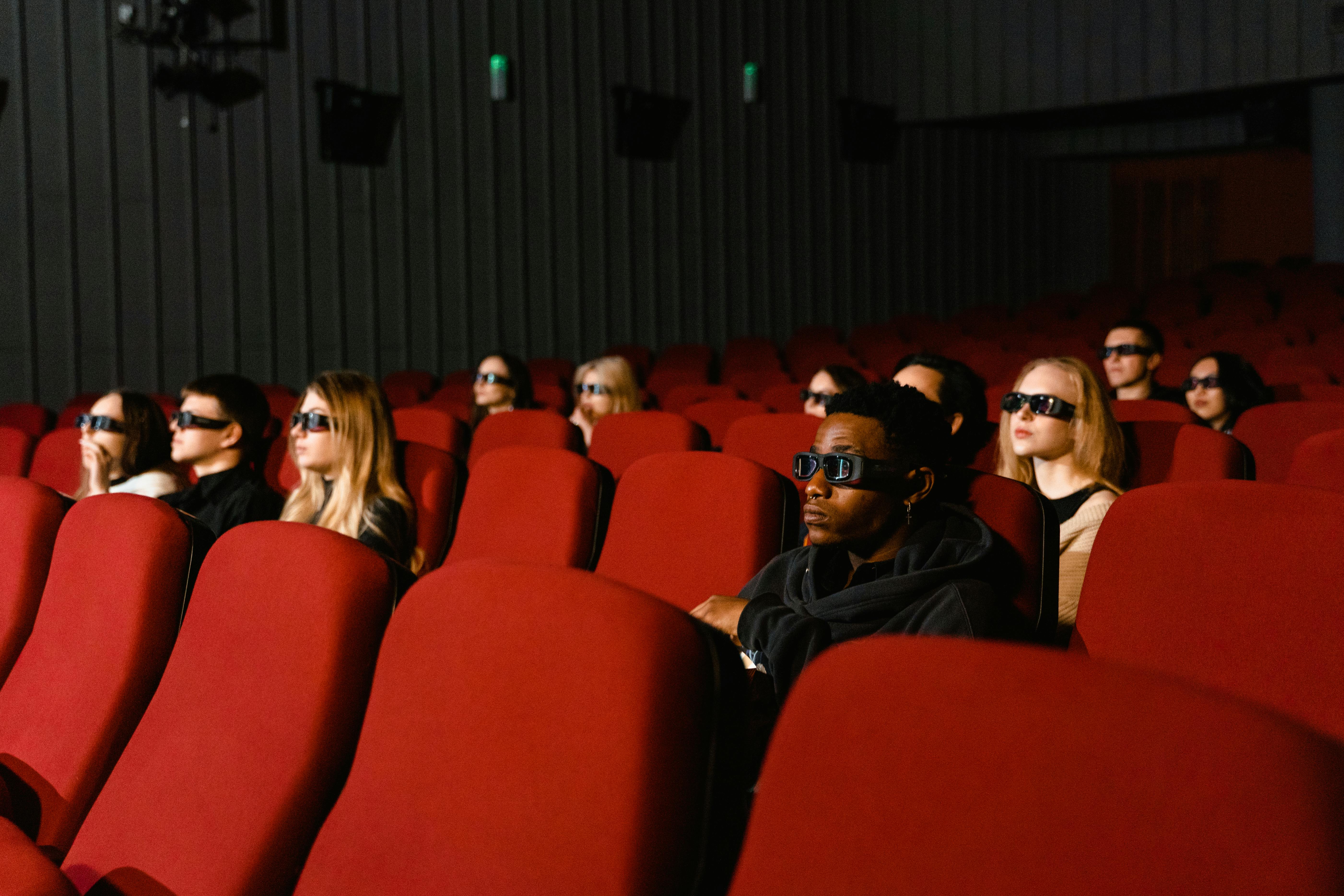
Engaging the audience is key for cinema chains worldwide. But how does this engagement vary across different regions? Let's dive into the different audience preferences, the effectiveness of cinema advertising, and the emerging trends affecting cinema attendance globally.
What are the audience demographics and preferences in different regions?
Audience preferences can vary greatly between regions. So, who goes to the movies most often? In the United States, it's the Gen Z crowd. This group, aged roughly between 9 and 24, are the most active moviegoers. They're the youngsters who love experiencing movies on the big screen with friends.
But how about elsewhere? In Asia, many people prefer regional films over Hollywood hits. Countries like India produce a vast number of films each year, catering to their diverse audience. Meanwhile, in Latin America, family-oriented films tend to draw big crowds, bringing families together for a shared experience.
What does this mean for cinema chains? They need to adapt. Understanding these demographics helps cinema chains tailor their offerings and appeal to local tastes. They might schedule showtimes that suit the typical lifestyle in that region or even introduce local snacks at concessions.
How effective are cinema advertising and promotional opportunities?
Cinema advertising can be very effective since viewers are a captive audience. Imagine you're waiting for your movie to start. You're relaxed, and your attention is focused on the screen. Ads shown at this time are more likely to catch your attention than those on a busy street.
So, what makes cinema ads special? First, they bring the advantage of a large, impactful display. The high-quality sound and visuals can make an ad feel more immersive. Also, cinema ad campaigns often target different demographics by region or even by movie selection. For example, promotions for a superhero film might feature video game ads targeting the younger crowd.
But it's not just about screen ads. Cinema chains also use promotions to lure in more viewers. VIP experiences, loyalty programs, or partnerships with local brands make the movie-going experience unique. These strategies not only bring more people in but also create a memorable visit.
What are the emerging trends in global cinema attendance?
The cinema industry has faced many changes in recent years. Streaming services like Netflix have led to new challenges, making some people skip the theater. But even with these changes, cinema attendance is starting to rise again after the pandemic.
What's driving people back? New trends and experiences play a big role. For example, cinemas are offering luxury experiences with recliner seats and gourmet snacks. It's not just about watching a movie; it's a complete event. Also, the appeal of social experiences is strong. Sharing laughter and surprises with a theater full of people creates unmatched excitement.
There's also a surge in diverse film choices. Audiences now have access to an array of global and independent films. Diversity in content is crucial as it invites different audience groups, making cinemas more inclusive and reflective of varied tastes.
As cinema chains work to attract different audiences, these trends are vital. They show how cinemas are willing to innovate and meet changing demands, ensuring that they stay relevant and engaging worldwide.
Conclusion
In this article, we explored the biggest cinema chains and their influence worldwide. We've examined how these chains dominate markets and how they share their market space. We also looked at historical growth, regional evolutions, and the latest innovations in cinema. Challenges from streaming services pose real threats, but cinema chains show resilience. Running a global cinema business has its financial hurdles, and understanding audience engagement is key. In conclusion, the cinema industry is evolving rapidly, adapting to keep movie magic alive and engaging across the globe.

